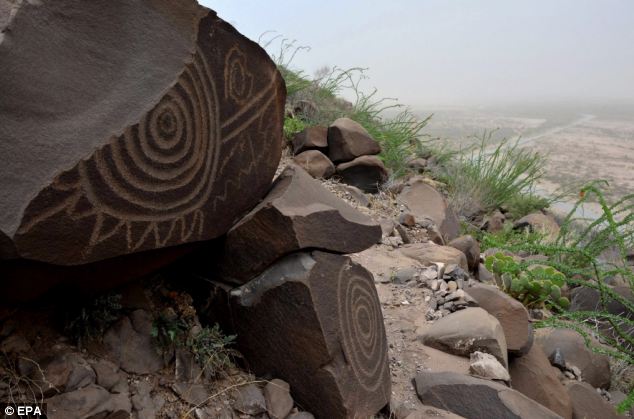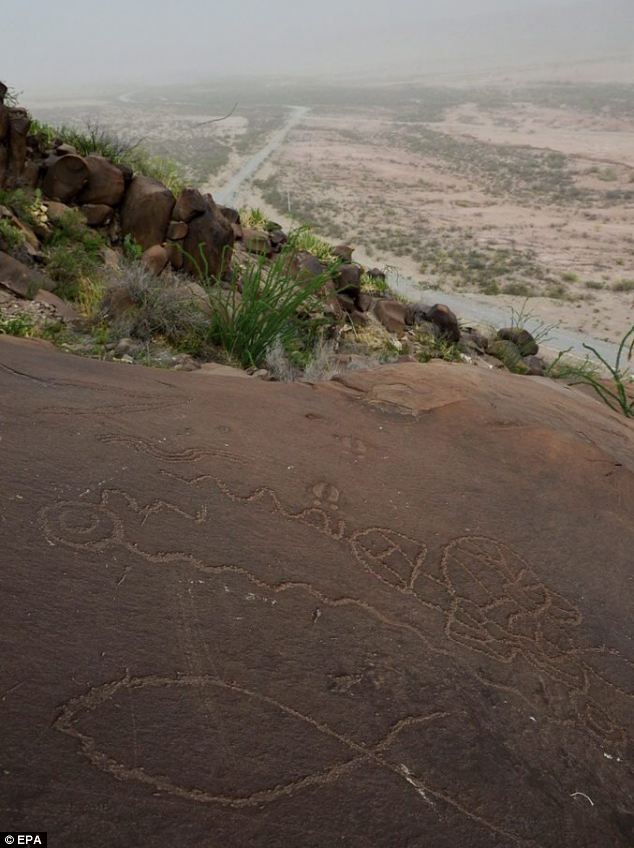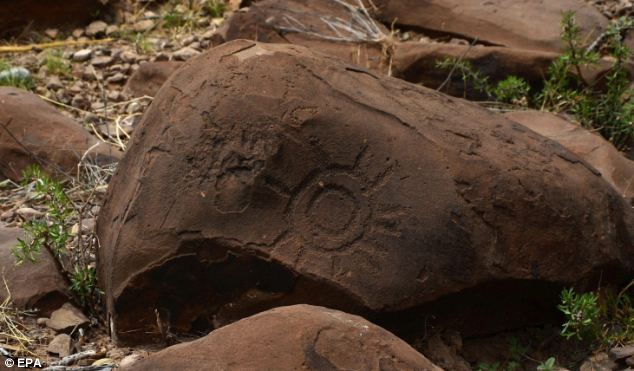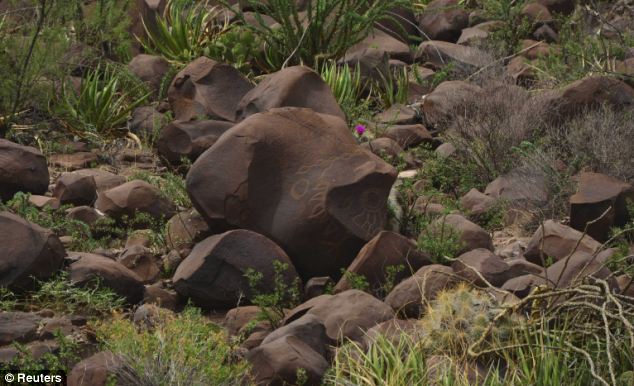The etchings, known as petroglyphs are generally patterns made up of concentric circles and wavy lines - there even seems to be a fish
Scientists think that the carvings could have been made as part of hunting initiation rites or even represent the stars.
Symbols of fish and the sun, as well as intricate pattens of concentric circles and lines drawn by our ancestors, have been found etched into stones on a remote mountain in Mexico.
Archeologists have discovered thousands of stunning stone-age carvings etched into rocks.
They believe that they were made by our hunter-gatherer ancestors more than 6,000 years ago.
The etchings are known as petroglyphs and are generally patterns made up of concentric circles and wavy lines, although there are also more representative images of deer tracks.


Around 8,000 of the historic drawings were discovered and recorded in Narigua, a site in Northern Mexico.
So far, 500 decorated stones have been found at the site, which measures two miles in radius and is the most important with so many of these 'petrograbados' in the Mexican state of Coahuila.
Scientists think the carvings could have been made as part of hunting initiation rites or even represent the stars.
They could give historians a clue of how sophisticated stone age tribes were in the area and even an idea of the kind of tools they used.

The pretroglyphs are scattered across the site and found on different parts of the mountain.
Most of the rock art was found on the southern slope of the mountain, but there were also some found scattered at the foot of the north side.
Gerardo Rivas, an archeologist at the National Institute of Anthropology and History (INAH) said there is evidence of stone age tribes having lived at the site.
He said that most of tribes lived in temporary settlements and that archeologists have found stoves, cooking pots and even arrowheads as evidence.
There is indication that the tribes were making tools to survive and lived in huts made of perishable materials, which were in some cases portable, he told Spanish language publication Mimorelia.

Archeologists have found evidence of camps in two valleys that are separated by a small ridge, with the larger ones located near Sierra de Narigua, where the largest group of carved rocks was found.
Mr Rivas said that the characteristics of the carved stones vary depending on their location.
Stones found in the main cluster in Narigua Sierra have etchings of strong points and concentric circles, although there are also wavy and broken lines.
Stones with representations of deer tracks were found elsewhere.
The archeologists also found relatively modern carvings of crosses probably made some time in the second half of the sixteenth century.
The archeological study started in August last year and the Institute plans to allow tourists to visit the site where the rocks were found, which lies around 60 miles west of the Mexican city of Monterrey.



Reader Comments
to our Newsletter